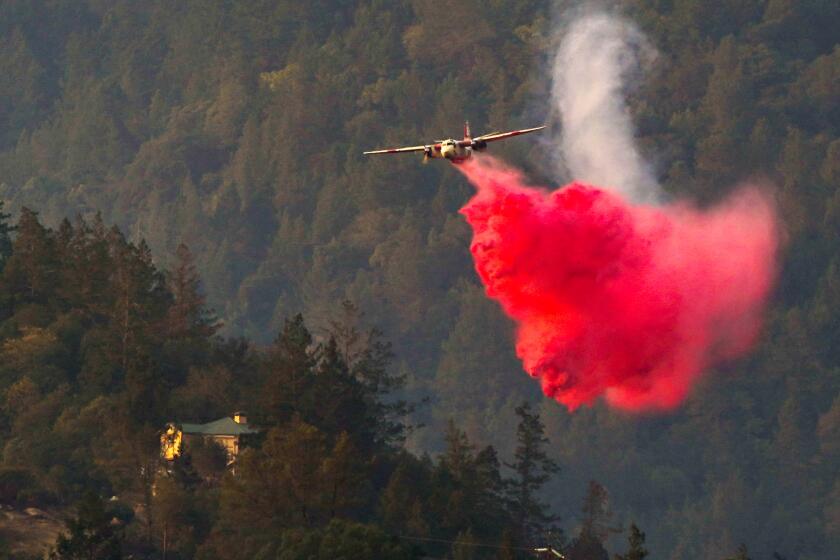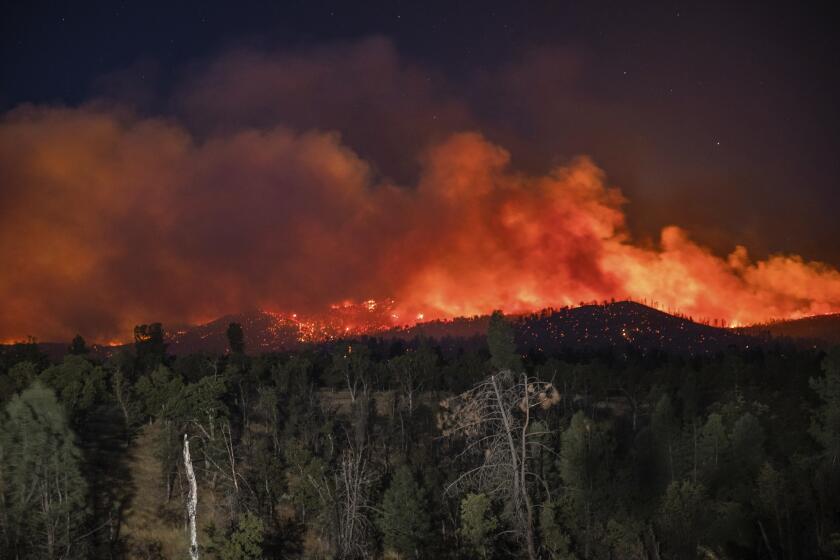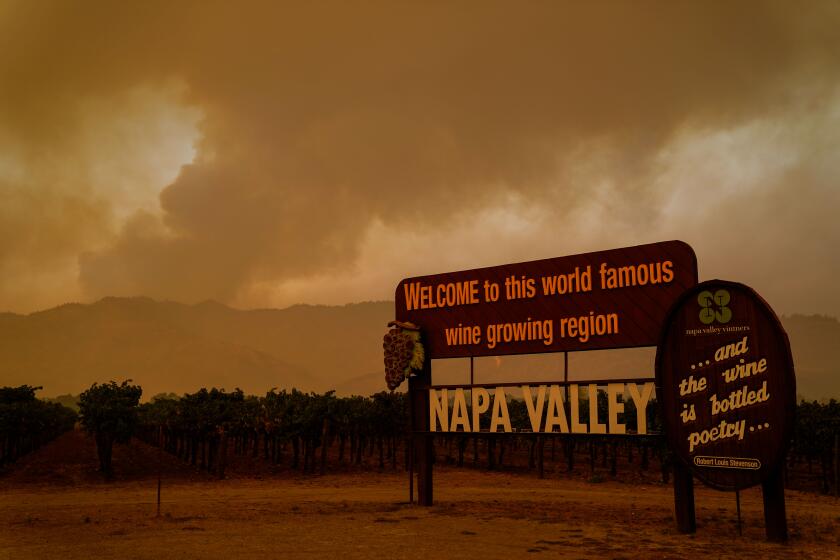Firefighters fear two mega-fires could merge in California as 4 million acres burn

- Share via
As fire crews continue working to get a number of significant blazes in Northern California under control, they’ve also endeavored to prevent a mega-fire merger that would take the top off the state’s record books.
The potential stems from two fires — the historically mammoth August Complex and the far smaller but still devastating Zogg fire — that have burned to within roughly nine miles of each other in an area southwest of Redding.
While crews have increased containment of both blazes recently, particularly on the Zogg fire, officials this week acknowledged some concern that the two could eventually meet.
“Nobody wants them to merge. We have every plan in place for them not to merge. But it’s 2020, and time will tell,” said Kale Casey, public information officer for the Alaska Incident Management Team that’s assigned to the north zone of the August Complex.
Fusing with the 56,000-acre Zogg fire would swell the August Complex’s already massive footprint to more than 1 million acres — a previously unthinkable milestone in an unprecedented fire season.
Fire crews, however, have made progress corralling the Zogg fire, which by Friday evening was 56% contained. Whereas some 1,500 structures were threatened Thursday night by flames, by Friday evening only 100 structures were in jeopardy. The Zogg fire has already destroyed 170 structures.
The progress is particularly promising around the fire’s southern edge — the area nearest the August Complex.
Chris Waters, an operations section chief with the California Department of Forestry and Fire Protection, said Friday that the fire has calmed significantly in “the area from Igo south to Highway 36 and then back north to Platina Road.”
“We have engines still patrolling looking for hot spots and making sure that thing doesn’t cause us any problems,” he said in a video briefing. “And then they’re also going to be available to do initial attack in the event that another incident starts.”
The eastern flank of the August Complex also appears to be in good shape, according to the Alaska team’s operations section chief, Karen Scholl.
But that could easily change if the winds pick up. Strong gusts can carry embers miles beyond a fire’s burn area, potentially jumping containment lines, Casey said.
“The potential is there for fires to merge, certainly,” he said Friday. “The original lightning strikes all merged to create this mega-fire. Though everyone has their defensive plan … that doesn’t mean that the fire won’t loft right over all that in a wind event.”
Northern California saw dramatically less rain than Southern California did over the last water year, which ended Wednesday.
The August Complex began Aug. 17 as more than 30 separate fires sparked by dry lightning in the Mendocino National Forest.
Some of those burned together over the following days and weeks, and by Sept. 10, the complex was officially the largest blaze in California history.
Already at 970,000 acres, more than twice the size of any in state history, it could surpass 1 million acres even if it doesn’t merge with the Zogg fire.
Containment of the overall complex — burning in and around the Mendocino, Shasta-Trinity and Six Rivers national forests — stood at 55% as of Friday evening.
Though its march has slowed in recent days, the Zogg fire has devastated an area southwest of Redding since igniting Sunday afternoon near the community of Igo. Four people have died, and 170 structures have been destroyed in the fire, authorities said.
Shasta County identified two of the victims Thursday. Sheriff’s Lt. Logan Stonehouse, the county’s chief deputy coroner, said the body of Karin King, 79, was discovered about 7 a.m. Monday on Zogg Mine Road in Igo.
Stonehouse said Kenneth Vossen, 52, of Igo died Tuesday at UC Davis Medical Center in Sacramento, where he was being treated for injuries suffered in the fire.
Two others found in the fire zone haven’t been positively identified yet, Stonehouse said, adding that the cases are still under investigation.
The Zogg fire has burned more than 55,000 acres and claimed a fourth victim, while the Glass fire has charred more than 51,000 acres in Northern California.
The Zogg and August Complex fires are just two of the significant blazes that have scorched sections of California during a devastating fire season.
Officials said this week that the state is poised to reach a grim milestone: 4 million total acres burned, easily the most in a single year.
“It’s likely that, over the next day or two, we will crest the 4-million-acre mark,” Cal Fire director Thom Porter said Thursday. “The biggest year before this year: 1.54 million. We are dwarfing that previous record, and we have a lot of season left to go.”
Crews are continuing to battle roughly two dozen major blazes statewide.
Those include the Glass fire, which has grown to more than 60,000 acres and has destroyed at least 220 homes in Northern California’s wine country.
Officials said that fire remained active overnight, with above-average temperatures, low humidity and dry fuels “continuing to challenge control efforts.”
The fire was 6% contained as of Friday morning.
The National Weather Service issued red flag warnings for the San Francisco Bay Area’s hills and parts of Lake, Mendocino and Monterey counties, where fires are already burning.
Areas around the Glass fire remain under a red flag warning through early Saturday because of dry and breezy conditions, according to the National Weather Service.
California’s calamitous fire season has brought with it a cost that goes far beyond the number of acres burned and structures engulfed.
The price in lives lost reached 31 on Friday, when Cal Fire announced that another victim of the LNU Lightning Complex fire had died.
The announcement came shortly after crews fully contained that complex, which at 363,220 acres is the fourth-largest fire in state history. The fire started Aug. 17 and burned in Sonoma, Lake, Napa, Yolo and Solano counties.
Full containment also has been reached on California’s third-largest fire: the SCU Lightning Complex, which scorched 396,624 acres in areas of Contra Costa, Alameda, Santa Clara, Stanislaus and San Joaquin counties.
Times staff writers Maura Dolan and Rong-Gong Lin II contributed to this report.
More to Read
Sign up for Essential California
The most important California stories and recommendations in your inbox every morning.
You may occasionally receive promotional content from the Los Angeles Times.













